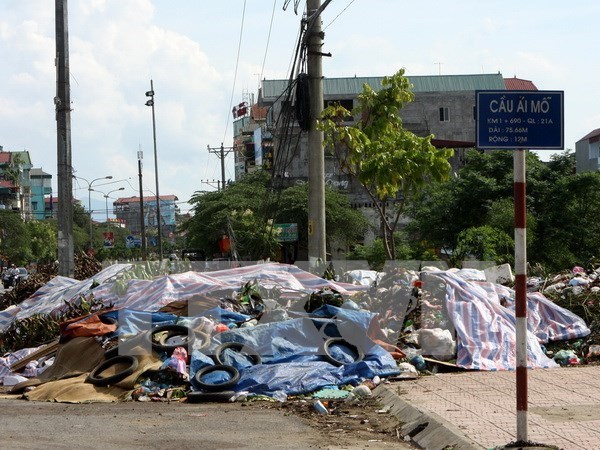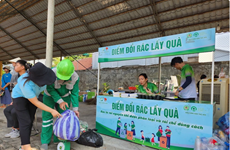Solutions to waste disposal problem in rural areas proposed
Various waste treatment solutions were proposed at a workshop in Nam Dinh province on April 28 as many rural areas across the country are grappling with environmental pollution.
 Garbage is dumped on the sidewalk of a road in Son Tay township, Hanoi (Photo: VNA)
Garbage is dumped on the sidewalk of a road in Son Tay township, Hanoi (Photo: VNA)Nam Dinh (VNA) – Various waste treatment solutions were proposed at a workshop in Nam Dinh province on April 28 as many rural areas across the country are grappling with environmental pollution.
The function was held by the Central Steering Committee for the national target programme on new countryside. It attracted officials from 12 provinces and cities who shared the concern that environmental pollution in many rural areas has reached an alarming level.
According to the Vietnam Environment Administration (VEA), about 67 percent of Vietnam’s population are living in rural areas. They release more than 13 million tonnes of waste, 1.3 million cubic metres of waste water and 7.5 tonnes of plant protection product containers every year.
Over 80 percent of the waste volume has not been collected and treated properly. Meanwhile, about 84 million tonnes of by-products of agricultural activities and chemical fertiliser residue have also contaminated water sources and degraded soil.
In addition, activities of industrial parks, craft villages and urban areas have posed threat to the environment in rural areas as well as local residents’ health, the administration said.
Deputy Minister of Agriculture and Rural Development Tran Thanh Nam said among the 19 criteria of the national target programme on new-style countryside, the 17 th criterion on environment has been fulfilled by only 42 percent of the total communes nationwide. It is one of the worst performed criteria.
Sharing local experiences, representatives of Hai Hau district in Nam Dinh province said natural gas-powered incinerators were piloted there in 2012, and they realised that such facilities can dispose waste effectively at low expenses.
The Hai Hau People’s Committee has supported each commune and town with 50 million VND (2,250 USD) to install natural gas-powered incinerators. Twenty-five of the 35 communes and towns in the district have used that type of incinerators so far.
In 2014, the VEA’s Centre for Environmental Consultancy and Technology built a dry anaerobic composting system in the form of a digester in Hoi Ninh commune of Ninh Binh province. The facility has proved effective in both environmental and economic aspects.
Former Deputy Director of Agriculture and Rural Development Ho Xuan Hung, an advisor to the new countryside building programme, said no matter which waste disposal methods are chosen, local communities are pivotal to environmental protection. Each person must improve their awareness and practice to minimise adverse impacts on the environment and their life.-VNA












